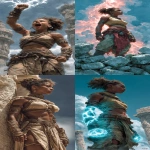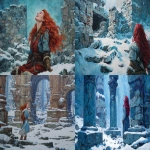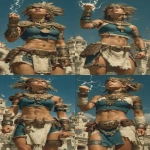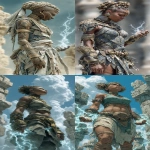Explore the Best AI Image Gallery

Quantum Leap: How Quantum Computing is Reshaping Creativity
The creative landscape is on the cusp of a profound transformation, driven by the emergence of quantum computing. This revolutionary technology, harnessing the principles of quantum mechanics, promises to unlock unprecedented capabilities in fields ranging from art and design to music composition and film production.
Unleashing Creative Potential: Applications of Quantum Computing
- Generative Design and Art: Quantum algorithms can generate novel and complex designs, pushing the boundaries of traditional artistic expression. Imagine AI-powered tools that create intricate patterns, sculptures, or even entire architectural blueprints based on user-defined parameters.
- Interactive Storytelling: Quantum computing can enhance storytelling by enabling immersive and personalized experiences. Imagine narratives that adapt in real time to viewer choices, creating a unique journey for each participant.
- Music Composition and Sound Design: Quantum algorithms can analyze vast musical datasets to identify patterns and generate innovative melodies, harmonies, and sound effects. This opens up exciting possibilities for composers and sound designers to explore new sonic territories.
- Filmmaking and Visual Effects: Quantum computing can accelerate the rendering of complex visual effects in films, enabling filmmakers to create stunningly realistic worlds and characters. Imagine photorealistic simulations of natural phenomena or breathtaking virtual environments.
Ethical Considerations: Navigating Uncharted Waters
As with any powerful technology, quantum computing raises ethical considerations that must be carefully addressed.
- Bias and Fairness: Quantum algorithms trained on biased data can perpetuate existing inequalities. It is crucial to ensure that these algorithms are developed and deployed in a fair and equitable manner.
- Ownership and Copyright: The question of ownership arises when quantum algorithms generate creative works. Who owns the copyright to AI-generated art or music? This requires careful consideration and legal frameworks.
- Transparency and Explainability: Quantum algorithms can be complex and opaque, making it difficult to understand how they arrive at their outputs. Ensuring transparency and explainability is essential for building trust and accountability.
Future Trends: Shaping the Quantum Creative Landscape
The future of quantum computing in the creative industry holds immense promise:
- Quantum-Inspired Creativity Tools: We can expect to see the development of user-friendly tools that harness quantum principles to empower artists, designers, and musicians.
- Hybrid Approaches: Quantum computing will likely be integrated with other technologies, such as artificial intelligence and virtual reality, to create even more powerful and immersive creative experiences.
- Quantum Art Galleries and Exhibitions: Dedicated spaces showcasing quantum-generated art will become increasingly common, providing platforms for exploring the boundaries of artistic expression.
Conclusion
Quantum computing is poised to revolutionize the creative industry, unlocking new realms of possibility and transforming how we create, experience, and interact with art. As this technology continues to evolve, it will be crucial to address the ethical considerations and ensure that its benefits are shared widely, fostering a future where creativity knows no bounds.





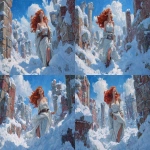
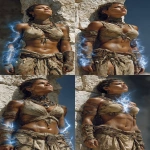



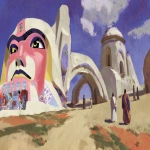



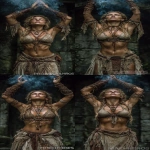




](https://images.ai-img.art/thumbnails/150/00df9b84a8818b4130bce9ca10c0c67ff2bc8952ca0fb5012dafc9b1c6378e67.webp)
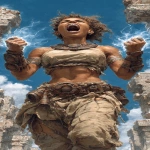
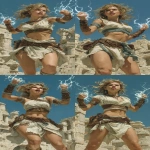
](https://images.ai-img.art/thumbnails/150/33a7122c923d87ba243a3afa0b16a930f1603be27b8ac938ff7f4ae4f5140553.webp)





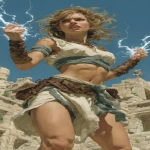

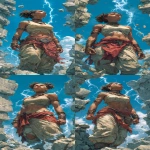
](https://images.ai-img.art/thumbnails/150/8aa2589b60ffe3dde30a265a6cac8d4ae71901c658ca48c4344f21436de413fb.webp)
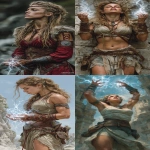

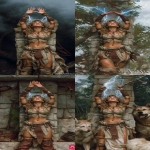
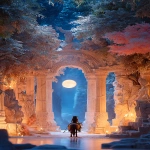
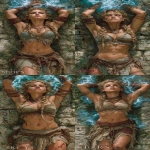

](https://images.ai-img.art/thumbnails/150/39c6bd41a1282b304a06fb11053bd009750b3879060719b1adb959228dbcd41a.webp)
](https://images.ai-img.art/thumbnails/150/bc5b40f43007c984885fc5b035e0fd81d75554a8730895e067565a6b7050524b.webp)
